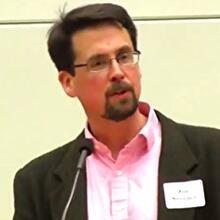The Artful Critic
My enthusiasm for Charles Dickens began in the eighth grade, when a longsuffering English teacher forced us to read A Tale of Two Cities. I remember it as tough going. Much of the vocabulary, historical allusions and humor required adult explanations. But I also remember thoroughly enjoying it. Three-plus decades later, I read and reread him and regret that my own kids never experienced required Dickens in school. Sadly, for them, Oliver Twist is a Disney character (from the 1997 television movie).
Working people used to crowd the docks around Boston Harbor the day copies of a new Dickens novel were due to arrive. What made this author the most popular of his day on both sides of the Atlantic? His characters were memorable, his stories well-plotted, but perhaps most important, he spoke to social concerns in ways that no one else, even and especially in the church, did. Dickens was no Trollope; one is hard-pressed to find a clergyperson in one of his novels who is not a windbag or faulty in some other way. He was nevertheless the conscience of his century.
In Nicholas Nickelby, David Copperfield and Hard Times, Dickens portrayed the inadequacies of primary education, and he did it very well. Who can forget the bumbling, ineffective teacher with the apt name, Mr. M’Choakumchild? In Bleak House, Dickens took on the corruption of government and the penal system. It seems that he was prescient, as we still live with these problems, and in some respects, they have gone unchanged in the varieties of their corruption and inhumanity since Dickens’s era.
Ruth Richardson’s fascinating new book takes Oliver Twist as its subject and tells the story of her recent discovery that Dickens grew up only a few doors from the major London workhouse that inspired both the novel and, likely, the novelist’s passion for social justice. Showing a deep understanding of the history of cities, the history of city planning, architecture, sociology and even sight-lines, this book is a detailed account of the boy Dickens’s neighborhood and its possible influences upon him.
Everyone knows the basic outline of Oliver Twist. Oliver is a poor, illegitimate orphan raised in a workhouse (Richardson’s definition of workhouses is: “publicly run institutions funded by local taxation, which provided minimal accommodation and sustenance for the desperate poor”), then apprenticed to an undertaker, who escapes to central London where he falls in with a band of ruffians led by an unreliable character, the Artful Dodger. The gang teaches Oliver to live by his wits on the streets, including how to pick the pockets of unsuspecting Londoners.
OliverTwist was shocking in its day for the realism with which it portrayed orphans, criminals and the underworld. With the novel Dickens almost single-handedly raised international awareness for the cause of taking better care of society’s underprivileged children.
Richardson begins by examining how Dickens only reluctantly revealed certain personal details about his life to his best friend and first biographer, John Forster. Forster’s biography was published in 1870, almost immediately after Dickens’s death. He quoted from autobiographical writings that were subsequently lost or destroyed, telling us that Dickens spent time working as a boy in a factory manufacturing shoe polish and that his father spent time in debtor’s prison. These details illuminated the novels, including David Copperfield, as the reading public understood that their author was writing from firsthand experience. But Richardson asks: If Dickens only reluctantly revealed these details to his best friend, could it be that he also decidedly did not reveal that he’d grown up in close proximity to a notorious workhouse in London? It is this hypothesis that Richardson works out convincingly.
At dozens of points in Dickens and the Workhouse, Richardson tells the reader in minute detail about early 19th-century London only to wonder why Dickens seems to have been silent about it in his novels, letters and autobiographical fragments. She makes these points to explain that Dickens was familiar with many aspects of London poverty from direct experience. For example, she writes, “London is a curious city. One can go a couple of blocks from an area that is down-at-heel and be in the most exclusive streets. Local inhabitants know where the divisions fall. It may be that Norfolk Street fell on the wrong side of the divide…. Dickens’s silence about Norfolk Street may show a Londoner’s tender sensitivity to such territorial markers.” This comes 15 pages after she discusses the “social geography” of Norfolk Street and its general dodginess, and 61 pages after she first tells us how young Charles’s first childhood home in London was on the same Norfolk Street.
Most readers of Oliver Twist would never know details like these or the fact that the novel was Dickens’s way of protesting a law passed by the Whig government in 1834. The Poor Law Amendment Act radically altered the way Londoners cared for their poor. This new law did away with much of what we today refer to as the “safety net” set in place by the principles of Christian charity and made the poor more akin to criminals requiring safe housing in these notorious workhouses. They were dreadful places. Families were usually split up upon entering them, and forced labor was the rule. Don’t let Disney fool you; Oliver Twist is appropriately brutal at times. In the early going of Twist, Dickens mentions that Oliver might have hanged himself, if the authorities had allowed him to have a handkerchief. Later on, the descriptions of the deaths of the poor, from hunger, for instance, are harrowing. Dickens was angry, and for good reasons.
This article also appeared in print, under the headline “The Artful Critic,” in the November 19, 2012, issue.








